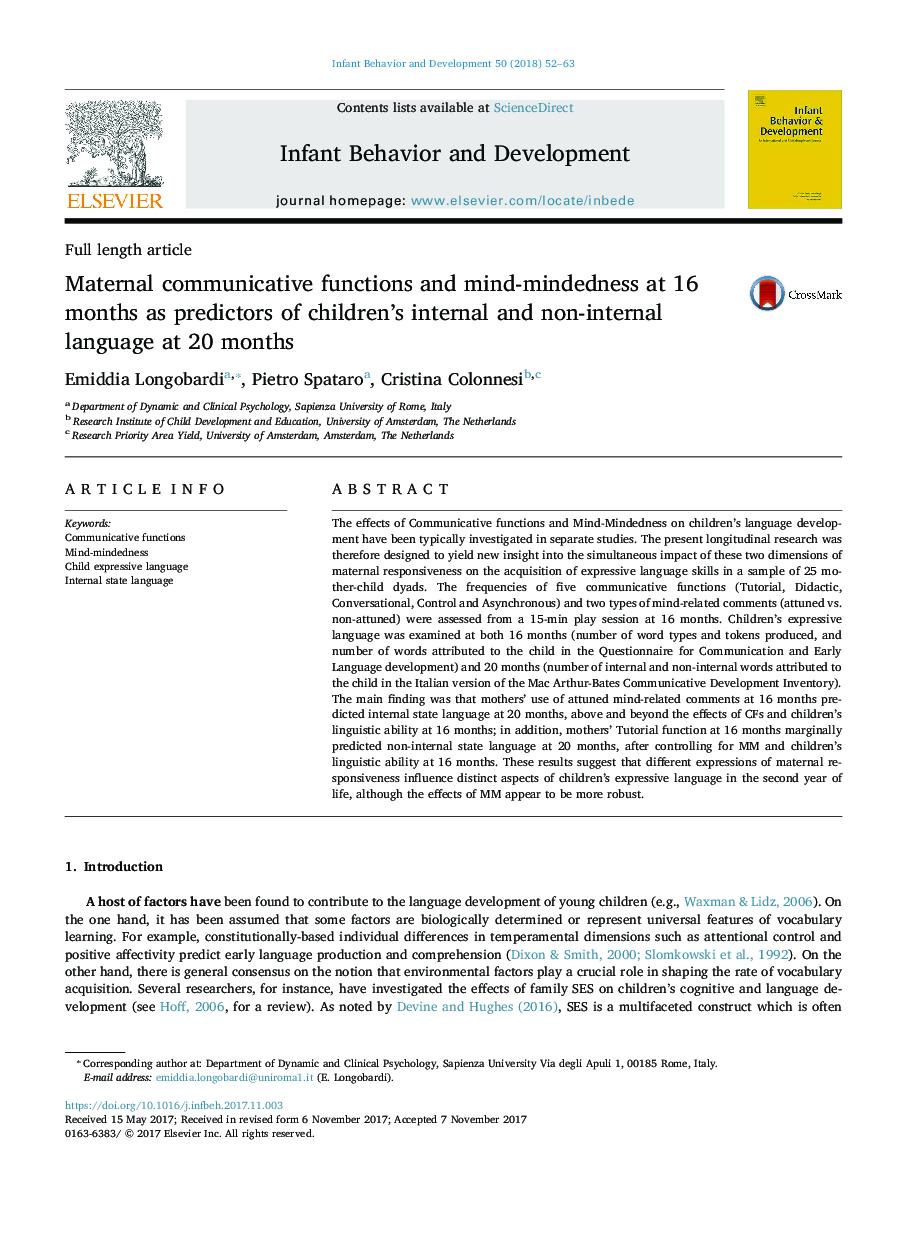| Article ID | Journal | Published Year | Pages | File Type |
|---|---|---|---|---|
| 7272957 | Infant Behavior and Development | 2018 | 12 Pages |
Abstract
The effects of Communicative functions and Mind-Mindedness on children's language development have been typically investigated in separate studies. The present longitudinal research was therefore designed to yield new insight into the simultaneous impact of these two dimensions of maternal responsiveness on the acquisition of expressive language skills in a sample of 25 mother-child dyads. The frequencies of five communicative functions (Tutorial, Didactic, Conversational, Control and Asynchronous) and two types of mind-related comments (attuned vs. non-attuned) were assessed from a 15-min play session at 16 months. Children's expressive language was examined at both 16 months (number of word types and tokens produced, and number of words attributed to the child in the Questionnaire for Communication and Early Language development) and 20 months (number of internal and non-internal words attributed to the child in the Italian version of the Mac Arthur-Bates Communicative Development Inventory). The main finding was that mothers' use of attuned mind-related comments at 16 months predicted internal state language at 20 months, above and beyond the effects of CFs and children's linguistic ability at 16 months; in addition, mothers' Tutorial function at 16 months marginally predicted non-internal state language at 20 months, after controlling for MM and children's linguistic ability at 16 months. These results suggest that different expressions of maternal responsiveness influence distinct aspects of children's expressive language in the second year of life, although the effects of MM appear to be more robust.
Related Topics
Life Sciences
Neuroscience
Behavioral Neuroscience
Authors
Emiddia Longobardi, Pietro Spataro, Cristina Colonnesi,
